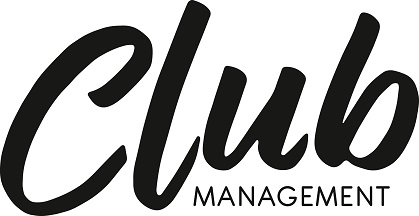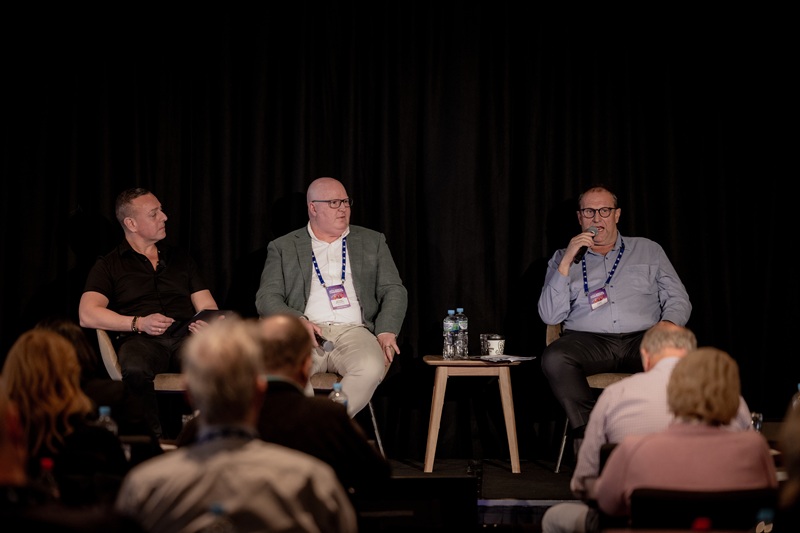Both Castle Hill RSL CEO David O’Neil and Cronulla RSL CEO Nathan Whiteside have stressed the importance for clubs to take advantage of technology to improve – and even exceed – member expectations.
Speaking during a fireside chat moderated by Catering HQ’s Steve Sidd at the recent 24th RSL & Services Clubs Association annual conference in Hobart, O’Neil explained that while artificial intelligence often feels like a new phenomenon, it has actually been evolving for decades.
“When we consider the innovation of AI, it’s been around for 50 years. It’s essentially a database of information coming together to deliver quality goods, services and efficiencies for your business. And I still think we’ve been slow to adapt,” he said.
For him, the real opportunity lies in how clubs use the data they already collect. “We’ve all got information sitting in our systems, but how often do we really tap into it? AI gives us the analytics to make those informed decisions, and it’s quicker. It comes back to how we can analyse and interrogate that data to make sure we’re delivering exactly what the customer wants.”
That member focus, O’Neil added, drove Castle Hill RSL’s move to digital membership cards.
“What we’ve tried to do is take away the inhibitors,” he said. “If you go back to the old days when you walked through the front door, you were told what you could and couldn’t wear, sign here, do this, do that … but we wanted to make that a seamless transaction. By utilising digital membership cards, it’s become much more accessible, and it’s removed the inhibitors when people come into the organisation.”
Both leaders stressed that technology should be a tool to enhance, not replace, the personal touch. Whiteside noted that smaller venues often achieve this naturally, but with the right systems larger clubs can replicate it.
“In a small country town you know all the members, but as you get bigger you don’t really know everyone that comes into your organisation. But if you can use technology to track the data, it can tell you Steve comes in on a Thursday, he has a schnitty … and I think this is where we’re going to get to in the future,” he said.
O’Neil agreed, highlighting the role of CRM systems in providing staff with insights that can deepen connections.
“We’ve all got our favourite Thai or Italian restaurant where we walk in, and it’s like, ‘Welcome. It’s great to see you again.’ You feel important. You feel engaged. From our point of view, we need to do that in our organisations better,” he said.
“Sometimes it may be a little bit easier in smaller organisations, but we should always strive for that personalised interaction with our members. We are an organisation that people from the community draw upon for a place of belonging and purpose, so we have a real opportunity to evaluate the proposition of making sure those people are engaged and loyal to us.”
Whiteside also took the opportunity to debunk the myth that AI could potentially lead to job losses.
“At the end of the day, we’re a customer service industry where people still need people to give them what they want,” he said. “I believe what AI will do is allow us more time to be more hyper-personalised in the quality of service and what we give those individualised membership groups.”
O’Neil noted the risk for clubs is not changing with the times.
“The risk is actually doing exactly what we’ve done, and not innovating, not looking towards the future for what opportunities are there for us. I think there is an incredible opportunity to harness what’s out there to set us apart,” he said.
The pair also spoke about how clubs can use underutilised spaces. Whiteside pointed to the opportunity of introducing competitive socialising to take the club space beyond just a venue, making it a place of experience to “attract people into the club that aren’t your traditional club members.”
“It’s about looking outside the box,” he said. “Everyone’s probably got some space they can make a bit more productive. Now’s the time to really start looking at that.”
O’Neil noted that it’s important for clubs to also understand the purpose of their spaces to determine how they can use them.
“Castle Hill has 15,000 square metres of club premises. But you cannot put people in 15,000 square metres of club premises every single day of the week, so you need to work out what your engine room is and how you can activate the next space,” he advised.

